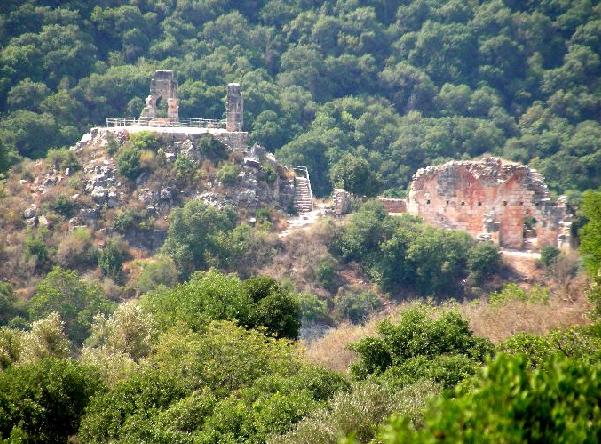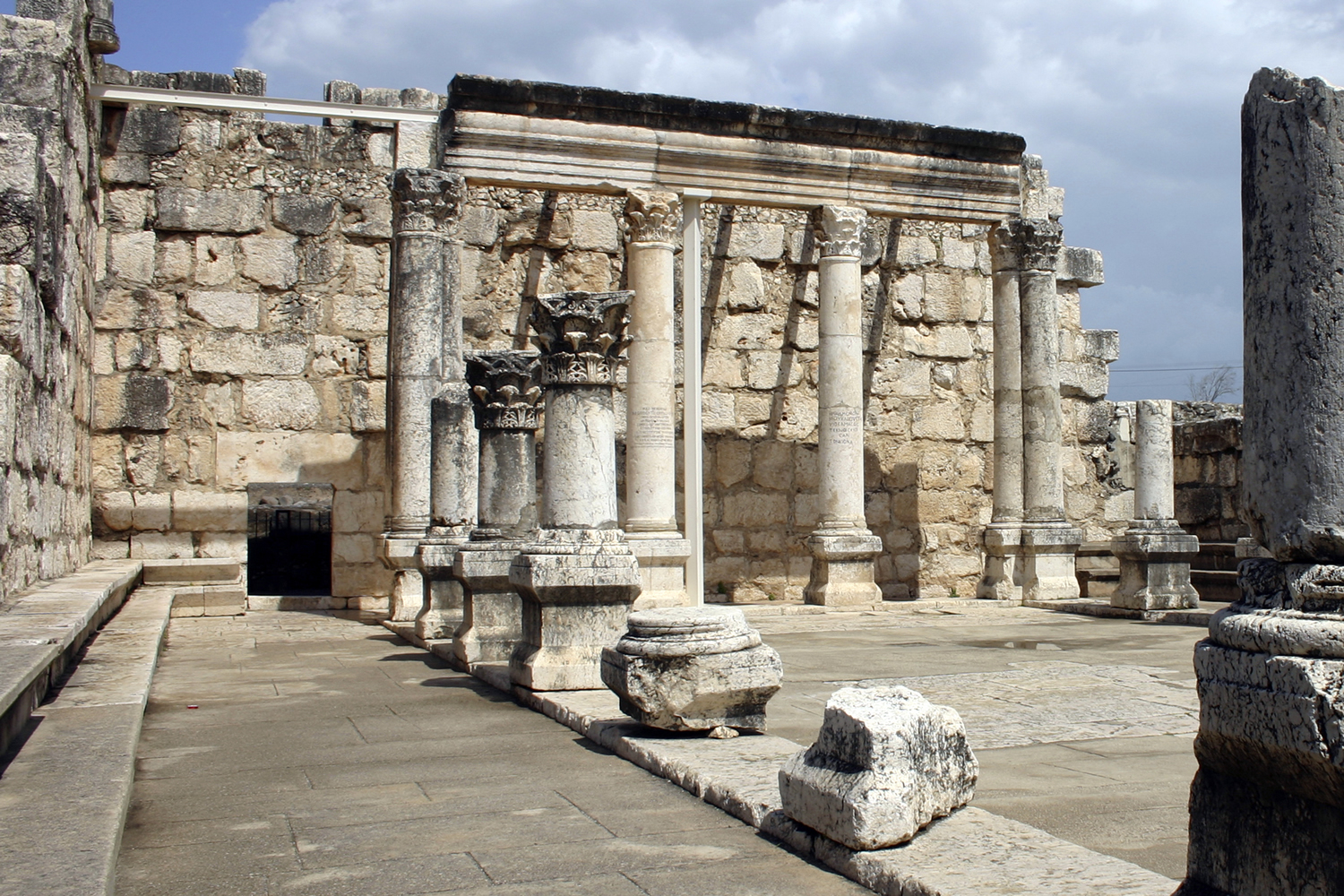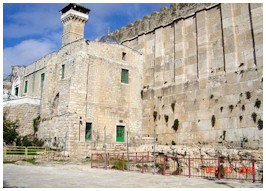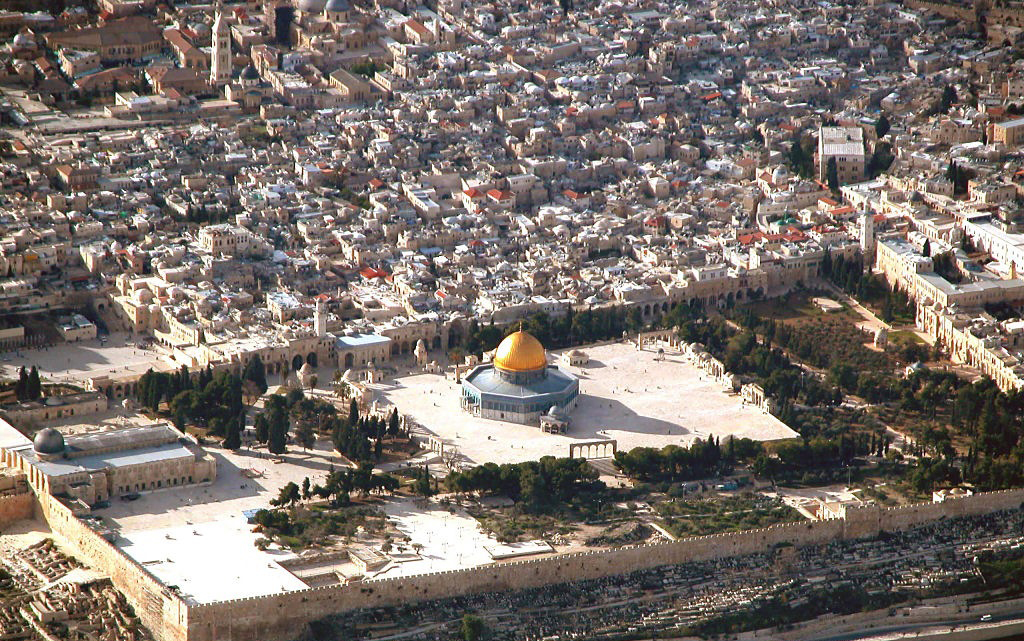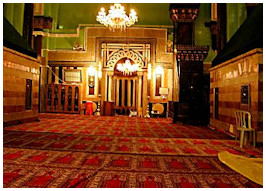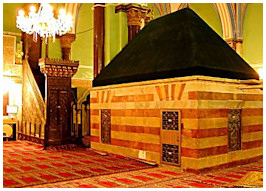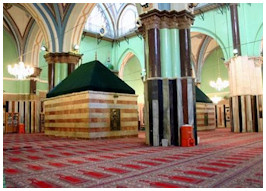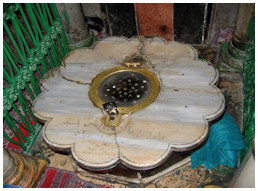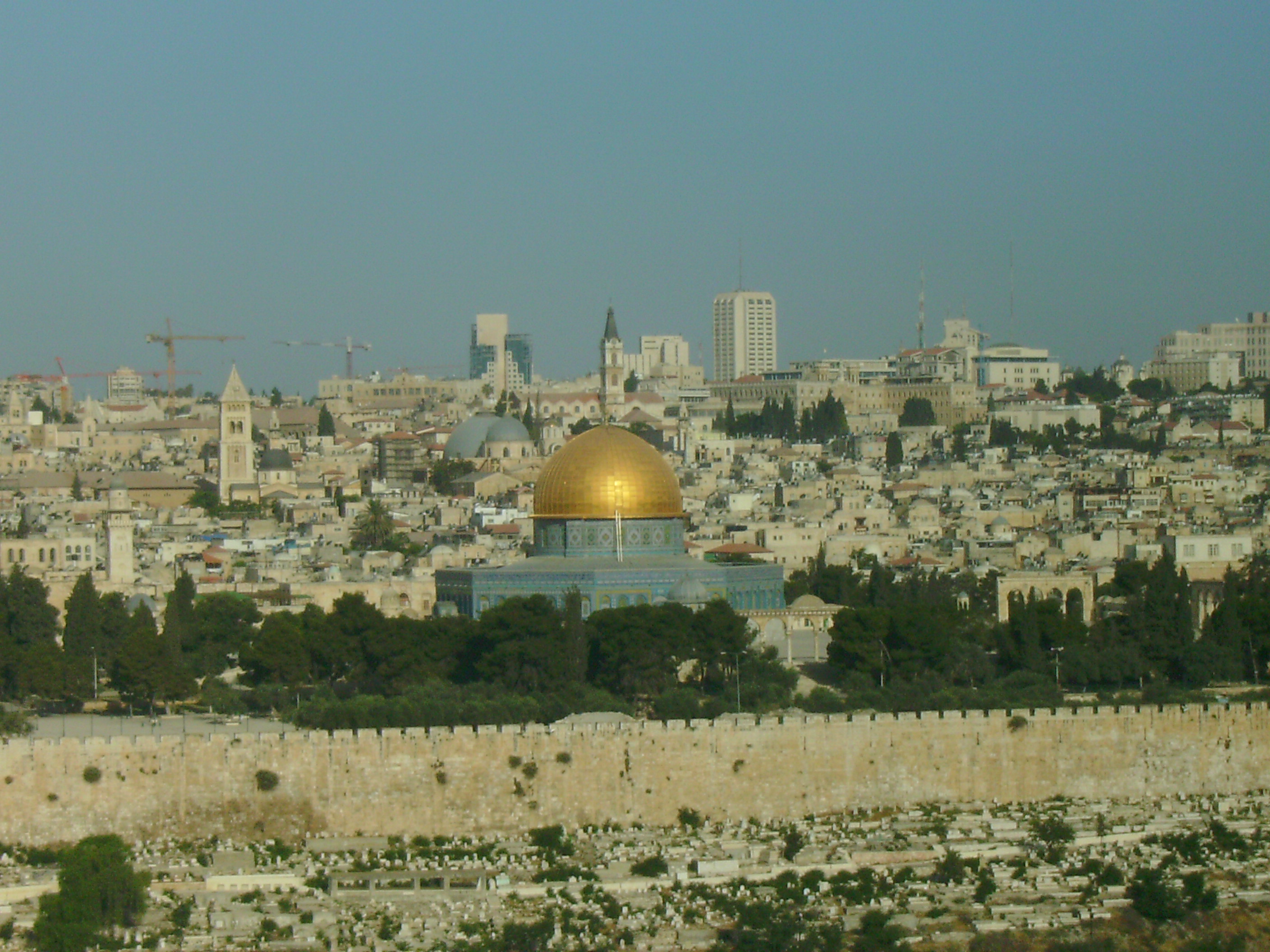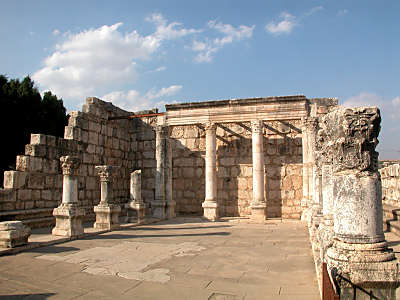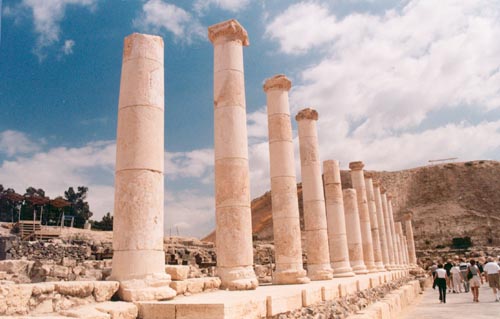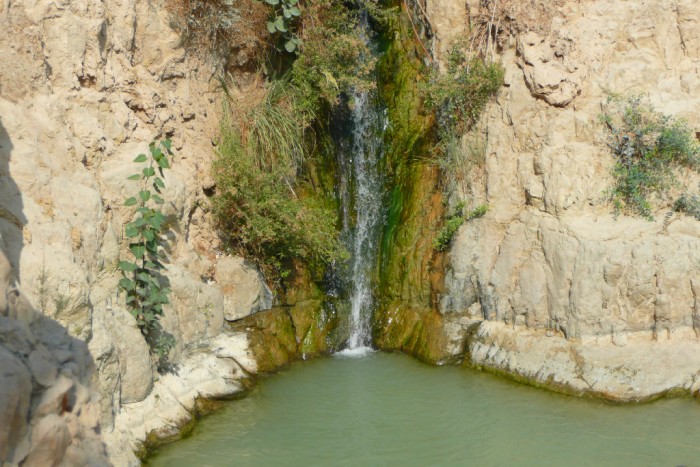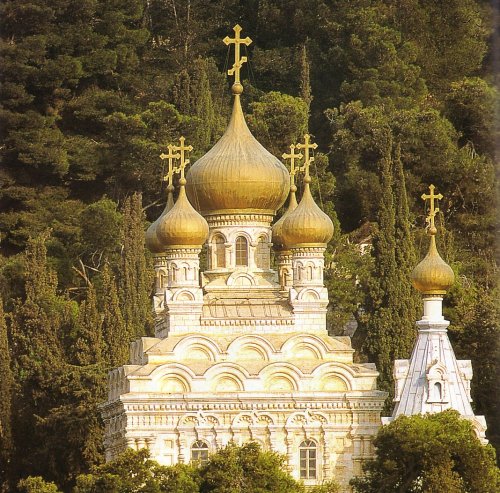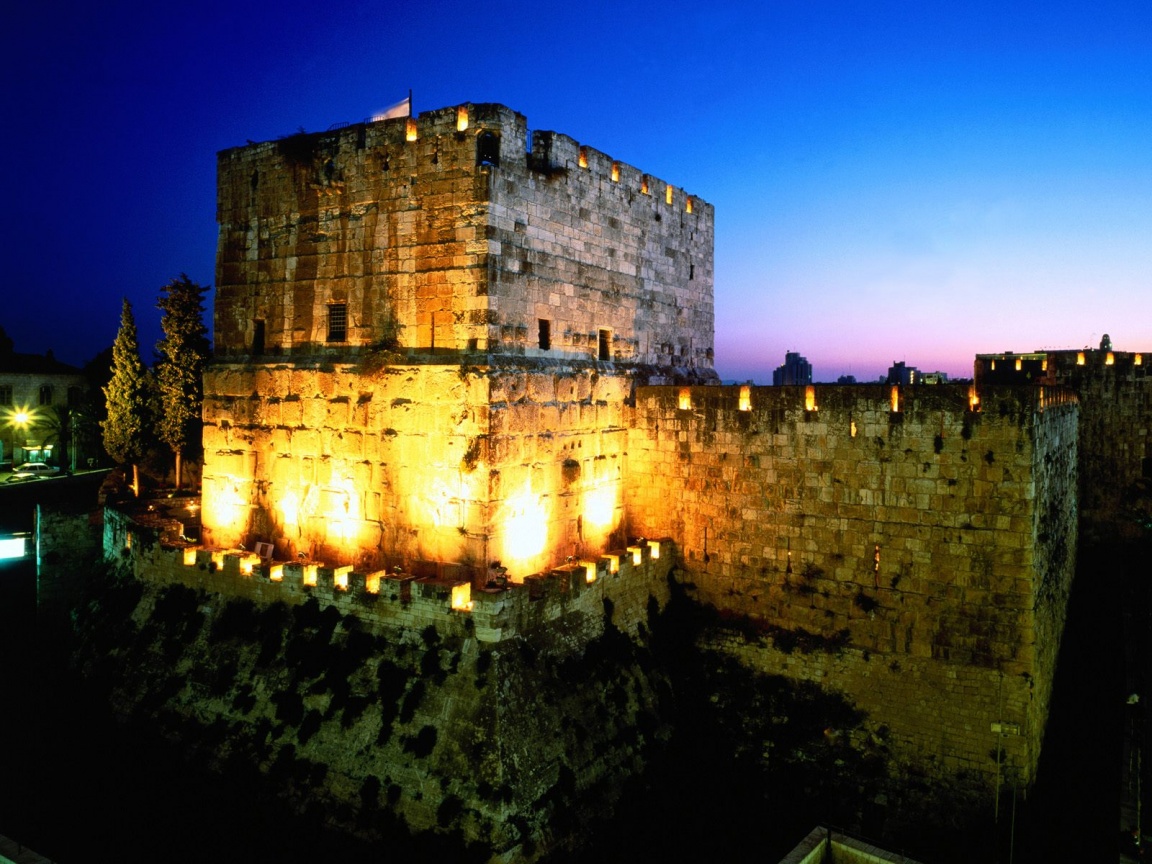Places in Israel
|
|
Jerusalem Temple Mount When King Solomon constructed his first Temple in Jerusalem the hillside on which he did so became the most important cultic site of the monotheistic world, and is still reverenced by Jews and Muslims today. Solomon (960 - 900BCE) built the temple that David was not allowed to, using Phoenician craftsmen from the neighboring kingdom of Tyre (See the lengthy account of the process in 1 Kings). He also built a circular platform around the edge of the hill to hold the courtyards that encircled the cedar wood and bronze building, and the whole edifice was to have been the focus of Jewish worship for ever. However, after his reign the Northern Kingdom declared autonomy, after which time the Temple was used by the tribes of Judea and Benjamin only. In 586BCE the Temple was destroyed by the Babylonians as Israelites continued to be trapped between warlike Southern and Northern empires. The inhabitants of Judea were killed or taken into exile (excepting the farmers). It was only after fifty years and the auspicious intervention of Persia, the new inheritors of imperial power, that they had the opportunity to return and rebuild the Temple, the thought of returning having sustained many of them during their exile (See Ezra and Nehemiah). This hastily constructed Temple stood until the Hasmonaeans shored it up in 186BCE, but was pulled down by Herod the Great in 20BCE who began a brand new building that was only finished sixty years after his death. He also constructed a much larger square platform around the hill to allow the Gentiles to go there without profaning the sacred areas towards the temple itself, and it is this platform that is the "Temple Mount" to this day. This temple was destroyed by the Romans during the Jewish revolt in AD70, just six years after its completion. The platform was, however, allowed to remain andiIt became the basis for a temple to Jupiter in the new Hadrianic city of Aelia Capitolina, surviving until the Byzantine period when the area was turned into a rubbish dump, proving visibly to the recently pagan that God had turned his favor from Jew to Gentile Christian. Such was the state when Omar the first caliph marched triumphant into the city and, having forced the Christian Patriarch to crawl on his hands and kness from the Holy Sepulchre to the Mount as penance for desecrating it, built the Dome of the Rock where the temple had stood six hundred years previously. Temple Mount The view from the Mount of Olives is wondrous: The densely packed walled city of Jerusalem embraced by the Hinnom and Kidron valleys, the Golden Gate to Mount Moriah, the Temple Mount, Mount Zion, David’s City and more, bring alive both prophecy and Psalms. It is from the Mount of Olives, with its view not only toward the Holy City, and its green surroundings, but toward the wilderness, that one understands how Jerusalem got one of its earliest names, Zion (2 Sam. 5:7), which comes from a word meaning desert. Tower of David Museum At the Tower of David Museum, not only do the captivating exhibits deepen your understanding of Jerusalem, its very stones are part of this city’s living history. The complex housing the museum, located at the Old City’s Jaffa Gate, spans the centuries: its nearly 500-year-old walls are part of the Turkish citadel; its name derives from a tower so massive that early Jerusalemites ascribed it to their great King David (ironically its builder was actually the much-maligned King Herod); the spire standing over it became a worldwide symbol for Jerusalem after the British General Allenby marched into Jerusalem beneath its shadow in 1917. Your visit can begin with a breathtaking view of Old and New Jerusalem from the top of the tower for which the museum is named. Then you can explore the exhibits, where videos, dioramas and computer graphics come together to illuminate the complexities of a city unique in the annals of human history. Each ancient room has been revamped to showcase a different period, allowing the tempestuous events of 4,000 years to fall perfectly into place in your mind. The windows frame glimpses of modern Jerusalem, and with each doorway you exit, you look down into the citadel’s central courtyard, where archaeologists have unearthed remains dating from the Maccabees to the Middle Ages. The museum also utilizes its unique space for multi-sensory exhibits by leading designers and artists from Israel and abroad, and for memorable private functions. Garden of Gethsemane
Visitors to of the Garden of Gethsemane are amazed when they learn that the gnarled olive trees they see could have been young saplings when Yeshua came here with the disciples on that fateful night after the Last Supper (Matt. 26:36; Mark 14:32; John 18:1).
|
New Bridge in Jerusalem
Beit Shean Colums
Jerusalem at night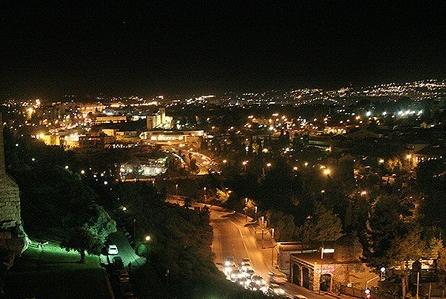
Bahai Shrine and Gardens
Beauty, grandeur, and inspired design, combined with the painstaking gardening of generations, create the unique atmosphere of the Bahai Shrine and Gardens in Haifa. This is the site where members of the Bahai faith have established their shrine and world center because of its significance to the Bahai faith.
The Bahai faith had its origins in the in Iran, where its followers severed themselves from the existing Moslem Shi’ite faith. Its founder, Baha'u'llah, was exiled from his homeland at the end of the 19th century, and came to Akko (Acre) and Haifa after suffering persecution in neighboring Moslem countries. He was impressed with the beauty of Mount Carmel and expressed the desire that the Bab, the forerunner of the faith, would be buried there. About 20 years later, the bones of the Bab were interred in Haifa on the site that then developed into the center for the Bahai faith.
The impressive gardens surrounding the shrine were designed and inspired by the doctrines of the Bahai faith. They succeed in blending in and creating harmony with the surrounding slopes of Mount Carmel. The gardens extend over 19 terraces, the highest of which contains the Persian Gardens, with their topiary sculpted into eight-pointed stars. Stone steps lead down the slope to the breathtaking Hanging Gardens below.
The shrine, with its golden dome, Italian marble walls, and granite pillars, was built in 1953 and has become one of the major tourist sites in Haifa. Its 40-meter high dome is covered with 14,000 gold-coated bricks. The shrine has nine sides representing the nine major religions of the world. It is surrounded by several other unique buildings, including the Universal House of Justice - the seat of the nine members of the high Bahai council, and the building that houses the archives of the Bahai faith.
The gardens are designed in nine concentric circles that look like waves extending out from the shrine at their center. The gardens combine works of stone and metal as well as fountains, shrubbery, and expansive lawns. The main path is surrounded along its entire length by colorful, well-kept gardens that blend in with the natural flora and enliven the surrounding panorama of the mountainside while creating a small nature reserve. The garden has earned the name “The Eighth Wonder of the World,” and its beauty offers visitors a feeling of calm and enchantment during the day, while special lighting converts the garden to a romantic quite place at night.
Mount of Olives
Located east of Jerusalem’s Old City and separating it from the Judean Desert, the Mount of Olives is one of the most prominent sites in the Jerusalem vicinity mentioned in the Holy Scriptures. It is first mentioned as King David’s escape route during the rebellion of his son Absalom, then later in the prophets; but it is most often referred to in the New Testament, being the route from Jerusalem to Bethany and a favorite location for Yeshua' teachings to his pupils and where he wept over Jerusalem. Here, the Dominus Flevit Church was built by the Franciscan order in 1954 to designs by A. Barluzzi in the shape of a tear atop remains of a Byzantine church.
At the foot of the mountain, adjacent to the Church of All Nations, stand the Gardens of Gethsemane (Gat Shemanim- oil press in Hebrew), in which one finds the golden turreted Russian Orthodox Church of Maria Magdalene. Besides the compound of churches adjacent to Mount Scopus at its north, which includes the Basilica of the Sacred Heart, the Basilica Eleona and the convent of Pater Noster, it is perhaps best known for the extensive cemetery that faces Jerusalem all along its western slopes.
Believed to be the place from which Yahweh will begin to redeem the dead when the Messiah comes, Jews have always sought to be buried here. The most famous of these graves actually lie at the foot of the mountain, flush against the Old City walls, including the Tomb Of Zechariah, the tombs of the sons of Hezir and Yad Absalom. Further up, among the 150,000 graves in the Jewish cemetery, one may find the final resting places of Jewish philosopher Nahmanides, Hebrew language reviver Eliezer Ben-Yehuda, former Prime Minister Menachem Begin, Chief Rabbis Avraham Isaac Kook and Shlomo Goren and media mogul Robert Maxwell.
Presently, the Jerusalem Municipality in conjunction with the Prime Minister’s Office is embarking upon an ambitious renewal and development project for the entire site. The 100 million shekel project includes the renovation of thousands of graves destroyed during the Jordanian rule over Eastern Jerusalem between 1948 and 1967 and the development and maintenance of roads, fences and a tourist information center. The project is expected to last for five years, due to the religiously sensitive nature of the area, which inhibits the use of heavy machinery.
Wailing Wall
Western Wall
Visitors who stand at the Western Wall, looking up at the huge ancient stones – the last remnant of the Temple in Jerusalem – are almost always surrounded by people: some have come to celebrate a Bar Mitzvah, others to take pictures before a wedding, or to place a heartfelt prayer-note within the cracks between the stones. But they sense the presence not only of the here-and-now, but also of the untold numbers of people who for centuries streamed to this, the most sacred place in the world to the Jewish people.
The Western Wall was part of the most magnificent building Jerusalem had ever seen. It was one of four walls Herod the Great built to support the 1,555,000-square-foot plaza on which the Temple stood. It was almost 1,500 feet long – the rest can still be seen inside the Western Wall Tunnel. Originally it was some 90 feet high and reached some 60 feet into the ground.
But it is not because of its grand architecture that the Western Wall became an inseparable part of the Jewish People. Solomon, who built the First Temple, said it best with these words: “May Your eyes be open day and night toward this House, toward the place of which You have said, ‘My name shall abide there;' may You heed the prayers which Your servant will offer toward this place. And when You hear the supplications which Your servant and Your people Israel offer toward this place, give heed in Your heavenly abode...” (1 Kings 8:17).
It was Abraham who first linked the Jewish people to Jerusalem, when he offered Isaac in sacrifice on Mount Moriah, the Temple Mount, now above and behind the Wall.
The rock of the offering, over which the Dome of the Rock was built in the late seventh century, is known in Jewish tradition as the Foundation Stone of the world.
King David purchased this land; Solomon's First Temple was destroyed by the Babylonians in 586 BCE; Herod expanded the Second Temple, which was burned by the Romans in 70 CE, except legend says, for the Western Wall. It was then that Talmudic sages began to teach: "This is the Western Wall of the Temple, which is never destroyed for the shekhinah [the Divine presence] is in the west" (Bamidbar Rabah 11:63).
In the Middle Ages, the Wall received another name – the Wailing Wall, as Jews were observed here lamenting the Temple's destruction. A legend says that on Ninth of Av, the anniversary of the Temple's destruction, the dew glistening on the stones is the Wall itself shedding tears.
For 19 years, from 1948 until 1967, when Jerusalem was divided, Jews were separated from the Wall. But then, in the Six Day War, on June 7, 1967, Jerusalem was reunited. From then on, the Western Wall became not only a symbol of glories past and a place to leave a bit of oneself in the form of notes bearing prayers and blessings, but of the love and devotion of the Jewish People for their Holy City now and forever.

